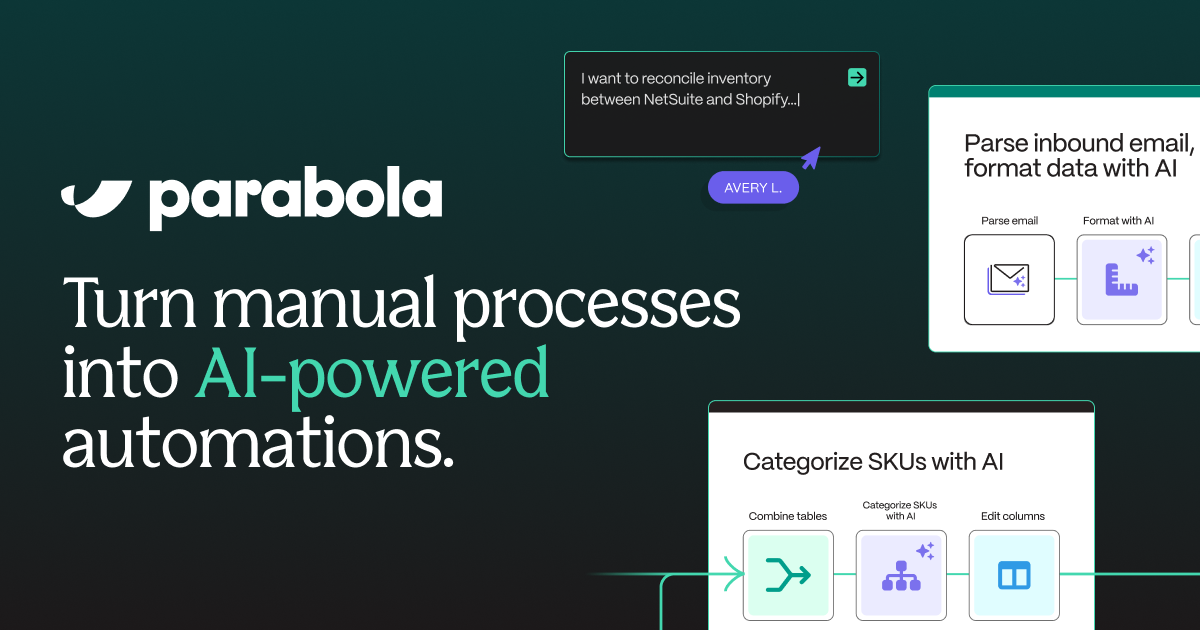Combine Shopify and API Data Using AI – Free Template
Combine Shopify data with API data without writing a single line of code.

Combine Shopify data with API data without writing a single line of code.









Parabola's Shopify integration enables seamless e-commerce data management and transformation.
Connecting your Shopify store to Parabola is straightforward using the Pull from Shopify step. This integration allows you to access various data types from your store, including orders, products, customers, and inventory information.
Parabola's API integration capabilities enable you to connect with virtually any external data source or service.
The Pull from API step in Parabola enables users to connect to virtually any API endpoint and retrieve data in real-time. This step handles authentication, request formatting, and response parsing automatically, making it accessible to users regardless of their technical expertise.
Once you have both data sources imported into your Parabola Flow, you can combine them using the Combine Tables step. This powerful feature allows you to merge data based on common fields, creating a comprehensive dataset for analysis.
Combine Shopify product data with competitor pricing APIs to automatically adjust your prices based on market conditions. This automation helps maintain competitive pricing while preserving profit margins.
Merge Shopify customer data with demographic information from external APIs to create detailed customer profiles. This enables better targeting, personalization, and marketing strategies.
Combine Shopify sales data with weather APIs and seasonal trend data to predict inventory needs more accurately. This integration helps optimize stock levels and reduce carrying costs.
Combining Shopify data with API data in Parabola opens up endless possibilities for automation and optimization. Whether you're looking to enhance customer experiences, optimize operations, or gain deeper insights, Parabola's no-code platform makes it easy to build powerful data workflows that drive business success.








Request a demo and see how Parabola can automate
your most manual SOPs.